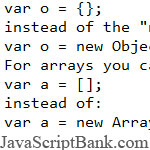 Bài viết này hướng dẫn bạn cách thức định nghĩa, cài đặt một lớp trong ngôn ngữ lập trình JavaScript thông qua 3 cách khá cơ bản. Xem thêm Lập trình JavaScript hướng đối tượng dành cho người mới.
Bài viết này hướng dẫn bạn cách thức định nghĩa, cài đặt một lớp trong ngôn ngữ lập trình JavaScript thông qua 3 cách khá cơ bản. Xem thêm Lập trình JavaScript hướng đối tượng dành cho người mới.
- Demo
- Phóng to
- Tải lại
- Cửa sổ mới
Miễn phí web hosting 1 năm đầu tại iPage
Nếu bạn vẫn còn đang tìm kiếm một nhà cung cấp hosting đáng tin cậy, tại sao không dành chút thời gian để thử với iPage, chỉ với không quá 40.000 VNĐ/tháng, nhưng bạn sẽ được khuyến mãi kèm với quà tặng trị giá trên 10.000.0000 VNĐ nếu thanh toán cho 24 tháng ~ 900.000 VNĐ?
Có trên 1 triệu khách hàng hiện tại của iPage đã & đang hài lòng với dịch vụ, tuyệt đối chắc chắn bạn cũng sẽ hài lòng giống họ! Quan trọng hơn, khi đăng ký sử dụng web hosting tại iPage thông qua sự giới thiệu của chúng tôi, bạn sẽ được hoàn trả lại toàn bộ số tiền bạn đã sử dụng để mua web hosting tại iPage. Wow, thật tuyệt vời! Bạn không phải tốn bất kì chi phí nào mà vẫn có thể sử dụng miễn phí web hosting chất lượng cao tại iPage trong 12 tháng đầu tiên. Chỉ cần nói chúng tôi biết tài khoản của bạn sau khi đăng ký.
Nếu muốn tìm hiểu thêm về ưu / nhược điểm của iPage, bạn hãy đọc đánh giá của ChọnHostViệt.com nhé!
Introduction
JavaScript is a very flexible object-oriented language when it comes to syntax. In this article you can find three ways of defining and instantiating an object. Even if you have already picked your favorite way of doing it, it helps to know some alternatives in order to read other people's code.
It's important to note that there are no classes in JavaScript. Functions can be used to somewhat simulate classes, but in general JavaScript is a class-less language. Everything is an object. And when it comes to inheritance, objects inherit from objects, not classes from classes as in the "class"-ical languages.
1. Using a function
This is probably one of the most common ways. You define a normal
JavaScript function and then create an object by using the new keyword.
To define properties and methods for a class created using function(),
you use the this keyword, as seen in the following example.
function Apple (type) {
this.type = type;
this.color = "red";
this.getInfo = getAppleInfo;
}
function getAppleInfo() {
return this.color + ' ' + this.type + ' apple';
}
To instantiate an object of the Apple class, set some properties and call methods you can do the following:
var apple = new Apple('macintosh');
apple.color = "reddish";
alert(apple.getInfo());
1.1. Methods defined internally
In the example above you see that the method getInfo() of the Apple
class was defined in a separate function getAppleInfo(). While this
works fine, it has one drawback - you may end up defining a lot of
these functions and they are all in the "global namespece". This means
you may have naming conflicts if you (or another library you are using)
decide to create another function with the same name. The way to
prevent pollution of the global namespace, you can define your methods
within the same class, like this:
function Apple (type) {
this.type = type;
this.color = "red";
this.getInfo = function() {
return this.color + ' ' + this.type + ' apple';
};
}
Using this syntax changes nothing in the way you instantiate the object and use its properties and methods.
2. Using JSON
JSON stands for JavaScript Object Notation; it simply uses the short
way of defining objects and arrays in JavaScript. To create an empty
object using JSON you can do:
var o = {};
instead of the "normal" way:
var o = new Object();
For arrays you can do:
var a = [];
instead of:
var a = new Array();
So using the JSON you can define a class, while at the same time
creating an instance (object) of that class. Such a class/object is
also called "singleton" which means that you can have only one single
instance of this class at any time, you cannot create more objects of
the same class. Here's the same class described in the previous
examples, but using JSON syntax this time:
var apple = {
type: "macintosh",
color: "red",
getInfo: function () {
return this.color + ' ' + this.type + ' apple';
}
}
In this case you don't need to (and cannot) create an instance of the
class, it already exists. So you simply start using this instance.
apple.color = "reddish";
alert(apple.getInfo());
3. Singleton using a function
The third way presented in this article is a combination of the other
two you already saw. You can use a function to define a singleton
class. Here's the syntax:
var apple = new function() {
this.type = "macintosh";
this.color = "red";
this.getInfo = function () {
return this.color + ' ' + this.type + ' apple';
};
}
So you see that this is very similar to 1.1. discussed above, but the way to use the object is exactly like in 2.
apple.color = "reddish";
alert(apple.getInfo());
- Lượt gửi (0)
- Mới
Save up to 630$ when buy new iPhone 15
GateIO.gomymobi.com
Free Airdrops to Claim, Share Up to $150,000 per Project
https://tooly.win
Open tool hub for free to use by any one for every one with hundreds of tools
chatGPTaz.com, chatGPT4.win, chatGPT2.fun, re-chatGPT.com
Talk to ChatGPT by your mother language
Dall-E-OpenAI.com
Generate creative images automatically with AI
AIVideo-App.com
Render creative video automatically with AI






 02/11/2010
02/11/2010 0
0
